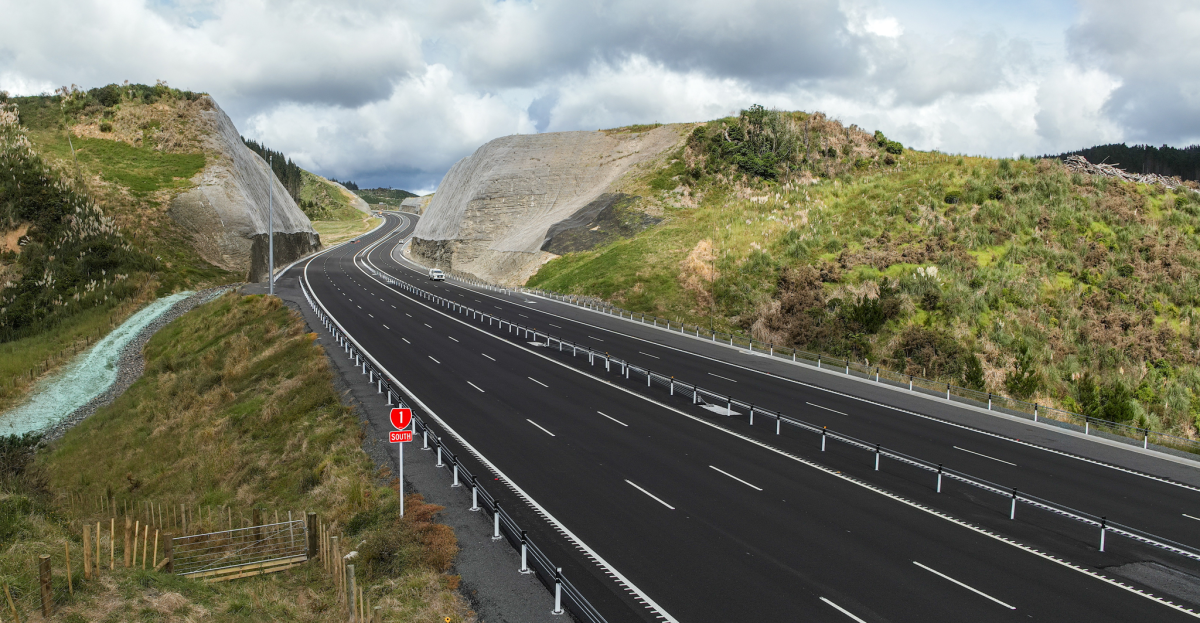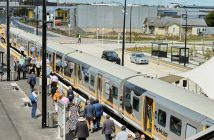The draft Government Policy Statement for Land Transport focuses more money than ever before on state highways, at the expense of public transport, walking and cycling. It also extends its reach much further than ever before, undermining the ability for NZTA/Waka Kotahi and local governments to make independent and evidence-based decisions, Greater Auckland’s Matt Lowrie writes

The Government has launched their draft Government Policy Statement (GPS) for Land Transport for consultation, replacing the draft version that Labour released last year prior to the election.
As the name implies, the GPS sets out the government of the day’s transport policies and planned spending on transport, over a 10-year horizon – although is refreshed every three years. The GPS breaks transport spending down into given “activity classes” and sets a funding range for each. Those funding ranges are then used by the New Zealand Transport Agency and regional councils to come up with more specific plans for how that money will be spent. Those plans are also required to be consistent with – and give effect to – the GPS.
This GPS is probably the most ideological, unbalanced and petty transport policy the country has seen. It is one that, despite the government’s rhetoric, will ultimately result in worse safety outcomes and fewer alternatives for driving, meaning more congestion, higher emissions (given transport is our second biggest source of greenhouse gases) and New Zealanders spending more on transport.
The media attention so far has largely focused on what’s arguably one of the more sensible aspects of the plan: increasing vehicle registration fees, which haven’t changed since 1994. The plan will see registration fees for most vehicles increase by $25 next January and then the same again a year later. The government says the registration fee increases will raise $530 million over three years.
It’s easy to see the media “cost-of-living” angle here, with costs landing harder for those already doing it tough – especially given National promised no new taxes and not to increase fuel taxes.
But this doesn’t mean fuel tax increases aren’t also happening: the GPS proposes a large 12 cents per litre fuel tax increase in January 2027. This would bring fuel taxes up to the same rate Labour had proposed, but in one big jump. All of this increased tax is to help pay for just a fraction of their road-intensive policy.
As expected, this government is focusing their transport policy on building lots of big roads. In other words, More Roads Of National Significance.
The Roads of National Significance include:
Whangarei to Auckland, with the following stages prioritised:
- Alternative to Brynderwyns
- Whangarei to Port Marsden
- Warkworth to Wellsford.
Tauranga to Auckland, with the following stages prioritised:
- Cambridge to Piaere
- Tauriko West State Highway 29.
Auckland roads:
- Mill Road
- the East West Link.
Roads to unlock housing growth:
- Hamilton Southern Links
- Petone to Grenada Link Road and the Cross Valley Link
- North West Alternative State Highway (SH 16).
Other major routes:
- Takitimu Northern Link Stage 2
- Hawkes Bay Expressway
- Second Mt Victoria Tunnel and Basin Reserve upgrade
- the Hope Bypass
- The Belfast to Pegasus Motorway and Woodend Bypass.
They also say all RoNS “will be four-laned, grade-separated highways” which is notable as in Auckland at least, both Mill Rd and the East West Link were never intended to be built to that standard under previous schemes. This likely means those projects will cost even more than they were already expected to (recalling, too, that the East-West Link was already set to be the world’s costliest road project).
The other big priority in the GPS is road maintenance, with the government creating new funding allocations specifically targeted at “pothole prevention” on state highways and local roads.
When it comes to public transport, one aspect they do highlight is:
There has been a 71 percent increase in Crown/NLTF funding for public transport over the past 5 years (Figure 3). However, over the same period patronage has decreased by 23 percent. This has partly been caused by COVID-19 restrictions, but numbers have not increased back to pre-COVID levels.
Increased public transport fare-box recovery and third-party revenue will be expected from local government.
Drops in public transport use has not “partly been caused by COVID-19 restrictions“, it’s almost entirely as a result of COVID and the changes to society that have occurred. And ridership levels are now quickly getting back to pre-covid levels. Furthermore, the issue with setting hard fare-box recovery targets, like the previous National government did, is that it ignores the economic benefit of that crown investment. Public funding for public transport should be focused on achieving the best overall outcome, rather than having arbitrary limits.
There are similar issues with rail, where the government are going to cut funding from the NLTF but hypothecate track user charges, saying:
While rail freight network investments will remain within the GPS, rail infrastructure will no longer be cross-subsidised from revenue generated from road users. It is unfair to ask people using the roads to fund rail infrastructure. Rail investments will continue to be supported and funded through the Rail Network Investment Programme, as agreed by Cabinet. Track User Charges paid by rail users will be used to support these investments.
Investments in the rail network, such as the rail network rebuild in Auckland, are entirely about making trains operate better and therefore making trains an easier choice for people who currently have to drive. That’s why the previous government allowed for rail projects to be funded from the NLTF.
The real key to the GPS, though, is in the expenditure targets and activity classes. These are where the government set how much funding can be allocated for each type of activity. These are given maximum and minimum ranges, with Waka Kotahi NZTA deciding where in the range the actual result will sit.
The headline figure here is that the government expects to spend over $18.6 billion on transport over the next few years – and that doesn’t include its expenditure on things that sit outside of the NLTF process, such as the City Rail Link, recovery from last year’s weather events, etc.
To put this in more perspective, here’s how this expenditure target has changed over successive versions of the GPS. Note that as of last August, Labour were also promising a big jump – however over the three years, this government’s aim is around $650m higher.
Things get even more extreme when considered at the activity class level.
As activity classes change with different governments, I’ve grouped these into some common categories for comparison.

So, at a minimum, the government is telling Waka Kotahi it has to spend more on state highways than ever before. And that’s to be paid for by slashing public transport, walking and cycling. (Note: the big drop shown in road policing is because the classes that fund road policing also included other safety measures in the 2021-24 GPS.)
This GPS also extends its reach way beyond all previous ones, delving into technical details in a way that, if followed, would undermine the ability of NZTA/Waka Kotahi and local governments, i.e. councils, to make independent and evidence-based decisions. This appears at first read to be contrary to the Land Transport Management Act, which enshrines the agency’s independence.
All the road related activity class descriptions include statements such as:
The Government expects that funding in this activity class will not be used to make multimodal improvements, i.e., cycleways and busways, or fund traffic calming measures, such as speed bumps and in-lane bus stops. Funding may be used to remove speed bumps that exist on high volume corridors. It is expected that NZTA will prioritise reliable travel times in all investment decisions in this activity class
While the Walking and Cycling description says:
This activity class is for the purposes of maintaining the existing walking and cycling network and investment in walking and cycling where there is either clear benefit for increasing economic growth or clear benefit for improving safety where demonstrated volumes of pedestrians and cyclists already exist.
[…..]
Any investment in walking and cycling must be funded exclusively through this activity class.
These sections imply incredibly unsophisticated understandings of economic value, and the role that all modes play together in enabling a more efficient and effective transport system, and transport’s role in enabling the success or otherwise of housing and other urban development. This is especially for urban areas, both towns and cities.
Let alone the horrifying implications for safety – it implies building or repairing roads without footpaths, crossings, and protective cycleways – and of course the environmental harms – especially including climate change, which appears so minimally in this document you’d suppose it no longer exists.
Does this government expect local roads to be built without even any footpaths?
What this means is the government is using funding activity classes to enforce detailed design outcomes. That’s getting extreme; it removes options from local councils and centralises decision-making with the government. Our transport system is already far more centralised than most countries, and this just makes that worse.
Given most projects these days – even the ones from the previous national government – are multi-modal, this is a massive shift. It is entirely about trying to stop investment in walking and cycling. It’s also deeply impractical: many urban projects require walking and cycling as part of their consent conditions, to mitigate the negative impacts of roads. Trying to split those aspects of projects out is not just bad policy, it’s also likely to lead to delay and extra cost while agencies work through those processes.
It’s also notable that this GPS says walking and cycling projects must be able to show clear economic benefits – while other projects, the government’s RoNS in particular, don’t. The irony is that walking and cycling projects often offer some of the best economic value, while assessments for most of the RoNS projects show they will never deliver as much economic return as they cost to build. And again, this is leaving aside climate considerations, and the impact of climate inaction on both our economy and our transport system – which the whole document seems comfortable with, even though transport is the main area all New Zealanders can all actually contribute to significant change.
There’s a lot more to dig into, but all up this GPS is concerning, if not downright irresponsible.
Consultation on it is open till 2 April. By all means have your say, it’s important to highlight the issues and put public perspectives on the record. That said, whether the plan changes substantially will probably be down to how local government reacts, or whether there’s a judicial review of any of the issues above.
First published on Greater Auckland: The Government’s Ideological Transport Policy – Greater Auckland












